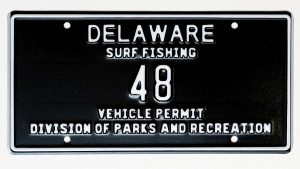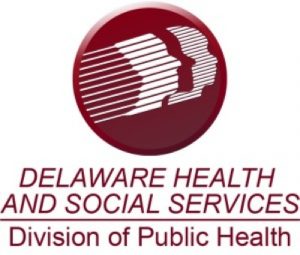DOVER – The annual Toxics Release Inventory (TRI) data report from Delaware’s industrial facilities as compiled by DNREC’s Emergency Prevention and Response Section shows the state continuing to make remarkable progress in reducing toxic releases into the environment. TRI data from 2014 – the most recent year for which statistics are available – shows a significant decrease in onsite releases to both land and air, with a slight increase in onsite releases to water, all as compared to 2013 figures. Total onsite releases were down 7 percent for 2014, with releases to land down 88 percent, air down 19 percent, and releases to water up 2 percent.
The reductions reflect a continued downward trend in toxic releases over the last 17 years – since 1998, when the reporting requirements were expanded to include a larger list of reporting facilities. The reporting of nitrate compounds released to water again had a major impact on the overall onsite releases, accounting for 78 percent (2.9 million pounds) of the total onsite releases. Releases for nitrate compounds were up by 61,000 pounds compared to 2013. The major changes impacting these reductions are covered below in the Delaware TRI summary and in greater detail throughout the report.
“Manufacturing and industrial facilities in Delaware continue to demonstrate that they can keep productivity high and minimize or reduce releases to our environment,” said DNREC Secretary David Small. “Enhanced technology, evolving best practices, the transparency of this TRI data, regulatory requirements and the public’s expectation for cleaner processes have all contributed to the positive trends we have seen since the inception of TRI reporting. DNREC looks forward to working with our diverse partners and stakeholders to continue this trend.”
Releases to air, land and water in Delaware are permitted by DNREC under rigorous environmental standards at both the national and state level. Permits granted by the department allow for limited discharge of pollutants within these standards that have been established for minimizing impacts to the environment and protecting public health.
Please refer to the following fact sheet for background on TRI and summary of 2014 TRI data. (The full TRI 2014 report and data are available at: http://www.dnrec.delaware.gov/SERC/Pages/Reports.aspx.)
Media Contacts: Debra Nielsen, DNREC Emergency Prevention and Response Section, 302-739-9405; or Michael Globetti, DNREC Public Affairs, 302-739-9902
Vol. 46, No. 20
FACT SHEET
Delaware Toxics Release Inventory
2014 Data and Report
What is TRI?
The Toxics Release Inventory (TRI) is a publicly available data set containing information reported annually since 1987 for toxic chemicals manufactured, processed, or otherwise used by certain facilities in Delaware and throughout the United States. TRI was established in 1986 under Title III, Section 313, of the Federal Superfund Amendments and Reauthorization Act (SARA 313) to provide information to the public about the presence and release of toxic chemicals in their communities. Title III is also known as the Emergency Planning and Community Right-to-Know Act (EPCRA).
Who must report?
Facilities that are required to the government under TRI must meet the following criteria:
- The facility must be covered under the North American Industry Classification System (NAICS) or be a federal facility. Primarily, these NAICS codes include manufacturing facilities, oil and coal fired electric facilities, and bulk petroleum terminals.
- The facility must have 10 or more full time employees.
- The facility must manufacture or process over 25,000 pounds or otherwise use over 10,000 pounds of a TRI chemical. The list of reportable TRI chemicals includes of 594 individual chemicals and 30 chemical categories. Certain chemicals, such as persistent bio-accumulative toxins (PBTs), have lower reporting thresholds.
What is reported?
Facilities submit reports to Delaware’s Department of Natural Resources and Environmental Control (DNREC) and the U.S. Environmental Protection Agency (EPA) on the waste management activities for the covered TRI chemicals. These activities include:
- Direct releases onsite to the environment. These releases are to air, water, and land.
- Waste managed onsite, which includes recycling, treatment, and energy recovery.
- Waste managed offsite, which includes recycling, treatment, energy recovery, or disposal.
Data from Delaware facilities is compiled by DNREC and the results are summarized in an annual report. A national analysis of the TRI data is provided by EPA’s annual report. It is noteworthy that TRI only requires reporting of releases and waste management activities, but not amounts used. The control of those releases is achieved separately through a variety of DNREC and EPA permits, laws and regulations.
Delaware 2014 TRI Results Summary
For 2014, 57 facilities submitted reports for 88 different chemicals. Approximately 3.75 million pounds were reported as being released onsite, a decrease of 278,000 pounds or 7 percent compared to 2013. Of this amount, approximately 18,000 pounds were released to land, while 800,000 pounds were released to air, and approximately 2.9 million pounds were released to water.
Onsite Releases
To Land: Onsite releases to land decreased by 134,000 pounds (88 percent) compared to 2013.
- This reduction was primarily attributable to the Indian River Generating Station for releases of barium compounds to land, which are down 86,000 pounds compared to 2013. (The barium compounds are contained in coal ash and disposed of in a state-of-the-art landfill onsite.) This facility’s reduction in releases occurred because of their shutdown of unit No. 3 at the end of 2013, and also because of the milder winter in 2014 versus 2013,
- Barium compounds were also the largest-reported release to land, with 14,000 pounds reported by Indian River Generating Station.
To Air: On-site releases to air were down approximately 194,000 pounds (19 percent) compared to 2013.
- Reductions in releases to air were reported by several companies, with the largest decrease being reported by the Indian River Generating Station of hydrochloric acid, down 114,000 pounds compared to 2013.
- Sulfuric acid was reported as the largest release to air at 298,000 pounds, with the majority being released by the Delaware City Refinery.
To Water: Total on-site releases to water increased by approximately 49,000 pounds (2 percent) compared to 2013.
- The increase in releases to water was primarily due to increases of nitrate compound releases reported by the Delaware City Refinery, up 111,000 pounds compared to 2013.
- Nitrate compounds were also reported as the largest release to water at 2.9 million pounds, with 2.74 million pounds (94 percent) released by the Delaware City Refinery and 169,000 (6 percent) released by Perdue Georgetown.
Offsite Transfers
Waste transferred offsite decreased by 584,000 pounds (4 percent) compared to 2013. Reductions in offsite recycling and waste sent to publicly owned treatment works (POTWs) offset increases in offsite disposal, offsite treatment, and offsite energy recovery.
Largest Change: The largest reduction was for offsite recycling of zinc compounds by Evraz Claymont Steel, due to the closure of this facility, down 1.5 million pounds compared to 2013.
Largest Chemical Reported: Lead compounds were the largest reported chemical amount transferred for offsite recycling at 5 million pounds, with 3.3 million pounds reported by the Johnson Controls Battery Plant, and 1.7 million pounds reported by the Johnson Controls Distribution plant.
Onsite Management
Waste managed onsite increased by 95 million pounds (24 percent) compared to 2013. Increases in onsite energy recovery and onsite treatment were partially offset by a small decrease in onsite recycling.
Largest Changes: Multiple facilities reported increases and decreases of more than a million pounds for onsite management compared to 2013. The largest reduction reported was for onsite treatment of hydrochloric acid by DuPont Edge Moor, with a reduction of 4.4 million pounds compared to 2013. The largest increase was for the onsite treatment of hydrogen sulfide by the Delaware City Refinery, up approximately 97.2 million pounds compared to 2013.
Largest Chemical Reported: Hydrogen sulfide was also the largest reported chemical amount managed onsite, with 433.6 million pounds being treated onsite, with the majority of that amount being reported by the Delaware City Refinery.









































































